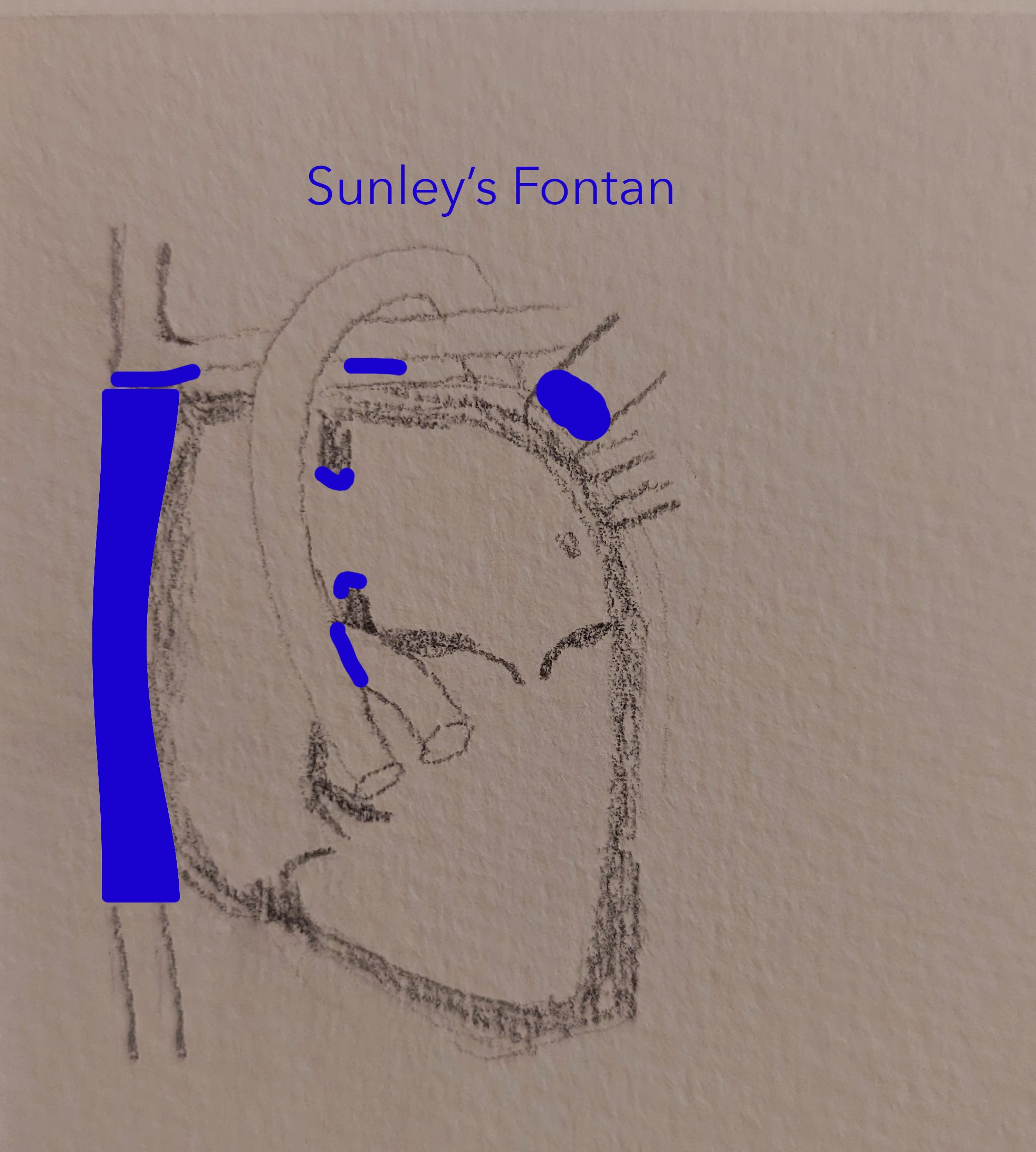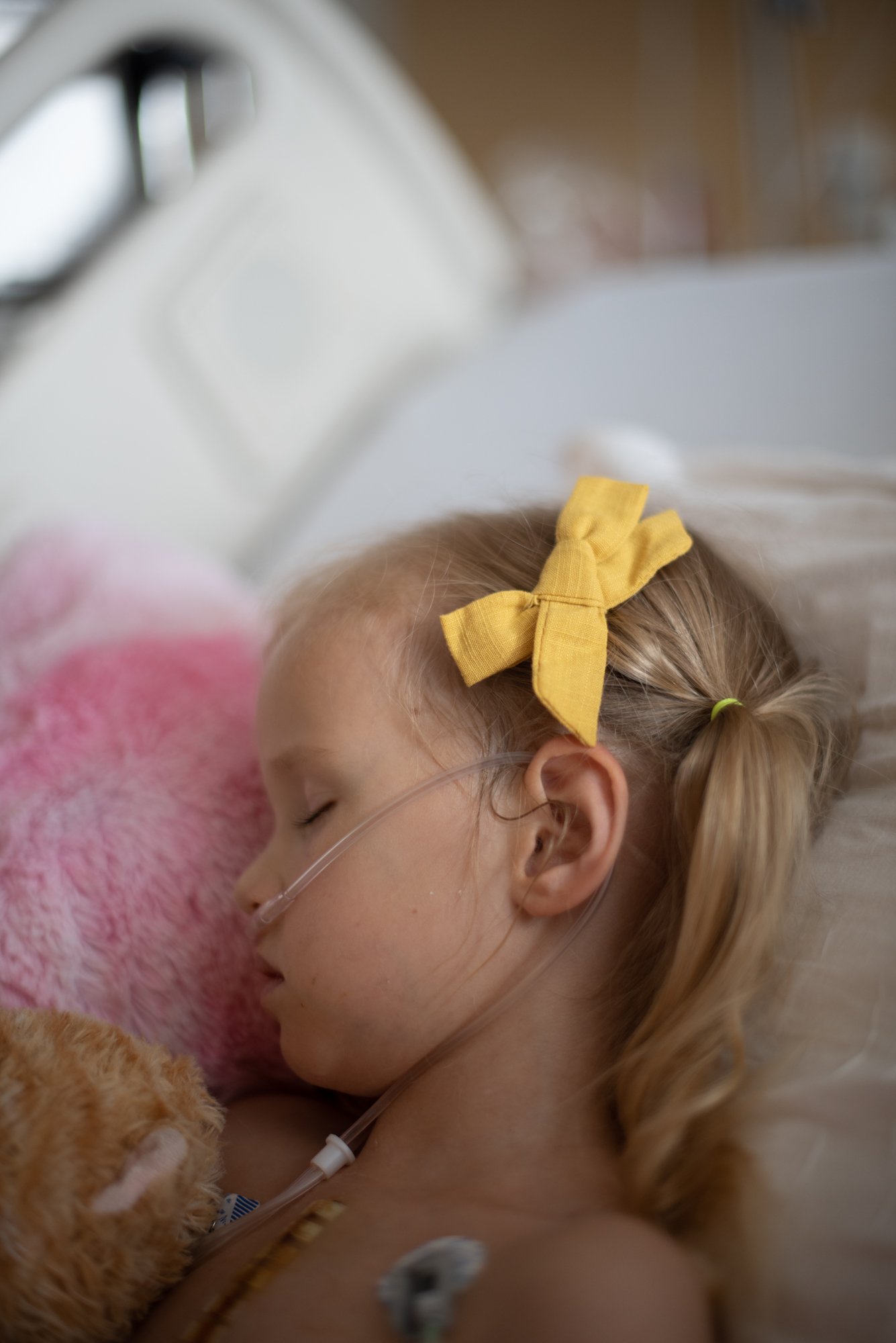Palliative
Several people have told me that they've googled Hypoplastic Right Heart Syndrome after learning of Sunley's story, so I think I'm long overdue for a recap on Sunley's condition, and what exactly this Fontan procedure did for her – and what it means for her health in the future. The surgeries she has had are called “palliative.” That means that none of these cured or will cure her heart condition. No one has ever been able to give us a very accurate prognosis for her because there is very little data, and because every heart kid responds in their own ways to these palliations. Sunley’s Fontan could last a very long time. Or it might not. I will say before we get into all the details, that Sunley has done very well so far, and we have every reason to hope that she will lead a very full and long life. Sunley's heart anatomy is very different than what google defines as HRHS. In fact, I've never been able to find her combo of heart defects anywhere in the internet. When I received Sunleys diagnosis prenatally, my cardiac knowledge began and ended with the fact that there are four chambers in the heart. And that is really about all I knew.
Below are some sketches I did, because it's pretty impossible to explain Sunleys anatomy without drawings. Keep in mind that this is a mirror image, like you are facing a person looking at their heart – so the "right" side is the patient's right, not our right.
First, this is a normal heart. It has four chambers: The left and right ventricles at the bottom, and the left and right atria above. The two greater arteries cross each other: the aorta (the one with the candy cane arch) and the pulmonary artery. On the right side of the heart (so, left side of the drawing) is the superior (above) and inferior (below) vena cava. Leading into the left ventricle from the left atrium is the mitral valve. Similarly, from the right atrium to the right ventricle is the tricuspid valve. The aorta and pulmonary artery also have valves inside them, controlling blood flow into both arteries.
The right ventricle pumps de-oxygenated blood into the lungs through the pulmonary artery and that blood becomes oxygenated in the lungs. That blood returns from the lungs into the left atrium. The mitral valve regulates the flow into the left ventricle, which pumps that good oxygen rich blood into the aorta which then flows to the entire body. The now used oxygen-poor blood comes back from the body through the superior and inferior vena cava, into the right atrium. The tricuspid valve regulates flow into the right ventricle, which pumps that blood into the pulmonary artery, and it all starts again. In a nutshell, oxygen-poor blood belongs to the right side of the heart (which travels to the lungs) and oxygen-rich blood belongs to the left side, which goes into the body and organs. There is so much more to the heart than that, but that's all you need to understand in order to understand Sunley's heart.
Sunley's cardiac anatomy is very rare, which is a morbid kind of cool. To start, her greater arteries do not cross. These major heart pieces form at the VERY beginning of a pregnancy, so she was probably single ventricle since before I even knew I was pregnant. Her pulmonary artery and aorta almost cross, but stop just short of that. There is a tiny piece of tissue near the opening of the aorta that may have been the beginning of a right ventricle, but even if it was, it never formed at all. Her mitral valve and tricuspid valve both open into one large single left ventricle, and both arteries flow out of that same ventricle. So she truly was born with just three chambers instead of four. Most, almost ALL, Hypoplastic Right/Left Heart Syndrome hearts have one fully functioning ventricle and a smaller second ventricle, so that's what makes Sunley's anatomy so rare (and so cool). Because of this structure, her heart had no way to separate the oxygen rich and oxygen poor blood; it was all mixing from day one. This is why her saturations we're so low (in the 70s to low 80s) from her first surgery until now.
We are very lucky that her greater arteries formed correctly, with no coarctation or stenosis (narrowing), and that is why her first surgery was a little less invasive than the typical single ventricle route (She had a PA Band instead of a Norwood). The PA band restricted blood flow into the lungs, since she had too much. When she was born, she actually had saturations in the 90s, but due to her heart anatomy, that created pressures that didn't work. She breathed so fast and couldn't gain weight at all. At 6 weeks old, she was still at her birth weight, maybe less, and always looked like she was hyperventilating, and had MAJOR retractions with breathing – the areas around her ribs and collar bone "sucked in" with every breath. As a new heart mom, I barely noticed it, but now I see videos and wonder how I wasn't extremely alarmed!
She had a balloon septostomy (popped the atrial wall open) via cath (through the groin) at 5 months old to allow better mixing of the blood. This allowed her to grow a bit more before her next open heart surgery at 6 months old, in November of 2018. She had a bidirectional Glenn and a DKS procedure at the same time. The DKS was done as a precaution, in case that piece of tissue by the tricuspid valve ever grows and ends up blocking the aorta. The pulmonary artery was cut and connected to the aorta, which allowed better blood flow to the rest of the body. Blood entered the lungs from the Superior vena cava, instead of the pulmonary artery now.
Her saturations after this stayed in the 72-83 range for four years, until now. Anytime she had a cold or virus that kept her under 70, we would use oxygen, but that only happened maybe 6 times or so in the last 4 years. The surgery that she had in April is called a Fontan procedure. A piece of conduit is sewn outside the heart onto the Inferior Vena Cava and the Superior Vena Cava, connecting them and creating passive blood flow into the lungs. So it’s not pumped, because the single ventricle isn’t doing the work to get the blood into the lungs; Instead, the circulation system relies on appropriate pressures to get the job done. This resulted in much better saturations for Sunley (As of May 2022, Sunley is at 96-97) for the first time in her life, and the hope is that this system will last for the rest of her life. Unfortunately, this means trading in low saturations for a long list of possible issues. We hope that Sunley will have minimal issues with her Fontan, but this system puts a lot more pressure on other organs — especially the liver.
(You’ll also see a plugged collateral vessel in the drawing below. In June of 2021, her heart had grown a massive collateral vessel to let off some of the pressure her heart is constantly under. It caused her to be very fatigued with extremely low saturations. It was plugged via cath in August of 2021, and bought us 8 more months before having to do the Fontan.)
There is a growing sub-specialty of medicine dealing specifically with adults who had a Fontan procedure as a child, because they do tend to have a wide range of medical issues, both cardiac and otherwise. Liver cirrhosis, chronic leg pain, electrical issues including SVT’s, GI issues are all some of the more common things that I’ve heard of. But the list is very long. Some do end up with failing Fontans and need a heart transplant. Side note: I did not know that a good heart transplant only lasts 5-10 years, and that the amount of immunosuppressant drugs needed to sustain that heart is staggering.
What does all of this mean for Sunley?
What does it mean that she receives only palliative care?
Medically speaking, yes this could shorten her life by a lot, or a little. Complications from living with a Fontan circulation, which is very hard on your body, could arise for her very soon, or not for 30 years. Fortunately, her condition is self-limiting, which means we can let her try sports, go hiking etc. When her body isn’t feeling it, she can limit herself (Although if you know Sunley, she definitely pushes it!).
We don’t consider Sunley’s condition to be terminal, although a nurse did use that word for her once. Palliative care does NOT mean that you’re at death’s door. There is a big difference in a “6 months to live” prognosis, and the kind of future that we see with Sunley. We know a lot of single ventricle people that are adults now and are experiencing a good quality of life. Some of them have jobs, some have spouses and children — these are things that Sunley can absolutely have in her future. There are so many advances being made in the congenital heart world that we are hopeful that she will have more options as she ages. Click here to learn more about how you can help that progress. This girl has every ounce of spunk a kid can have, and she absolutely has the spirit of a fighter (And by the way, her siblings have been through a LOT too, and have been absolute champions). The force is strong with this one.
With all of that said…As a parent, how do I get rid of that asterisk that accompanies every conversation, every description of Sunley’s physical health? I can’t stick my head in the sand and pretend like everything will be fine, always.
I can’t really answer a lot of my own questions, because so much of her condition is just “wait and see.” I will say that I don’t use the phrase “we expect,” but instead “we hope.” I have learned to live in that place, even though it still takes my breath away at times. I have really struggled since her surgery trying to accept that she is not healed.
You have to understand, for the second half of my pregnancy with her, I begged God for healing. Begged. With everything in me. I begged Him until I was completely broken apart. And I can tell you now that He did something better than that. And me just being able to say that is a miracle all by itself.
I’m having to open up my definition of healing to something more than what this world offers, because God Himself is more than what this world offers. In the world, we see healing as black and white — born with heart condition, healed from heart condition.
But Sunley’s heart doesn’t work that way.
And because of being thrown into the very complicated world of palliative care, I’m able to dip my toe into the ocean of understanding that God heals in different ways.
And call me crazy, but I’m trusting that those ways are better than mine.










